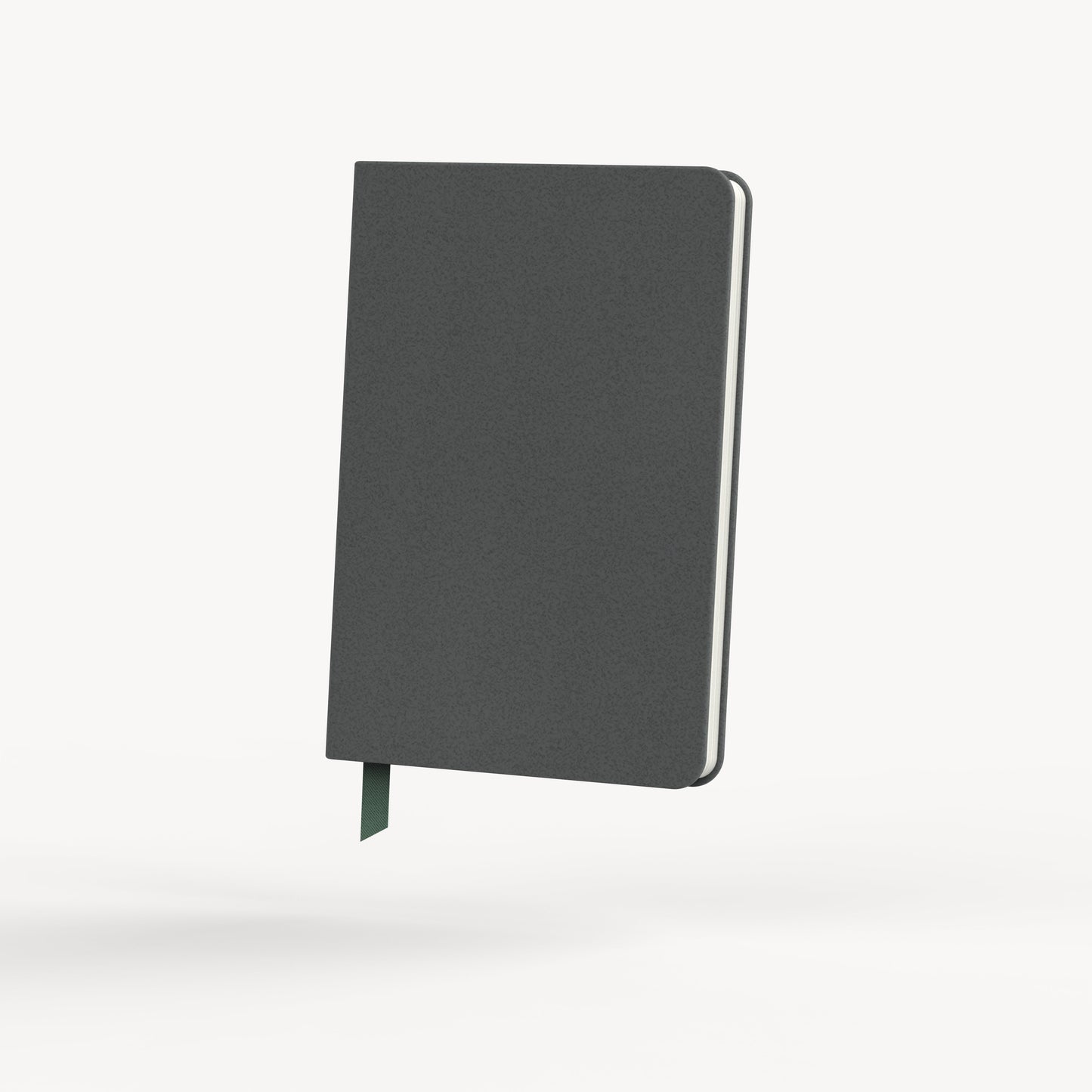

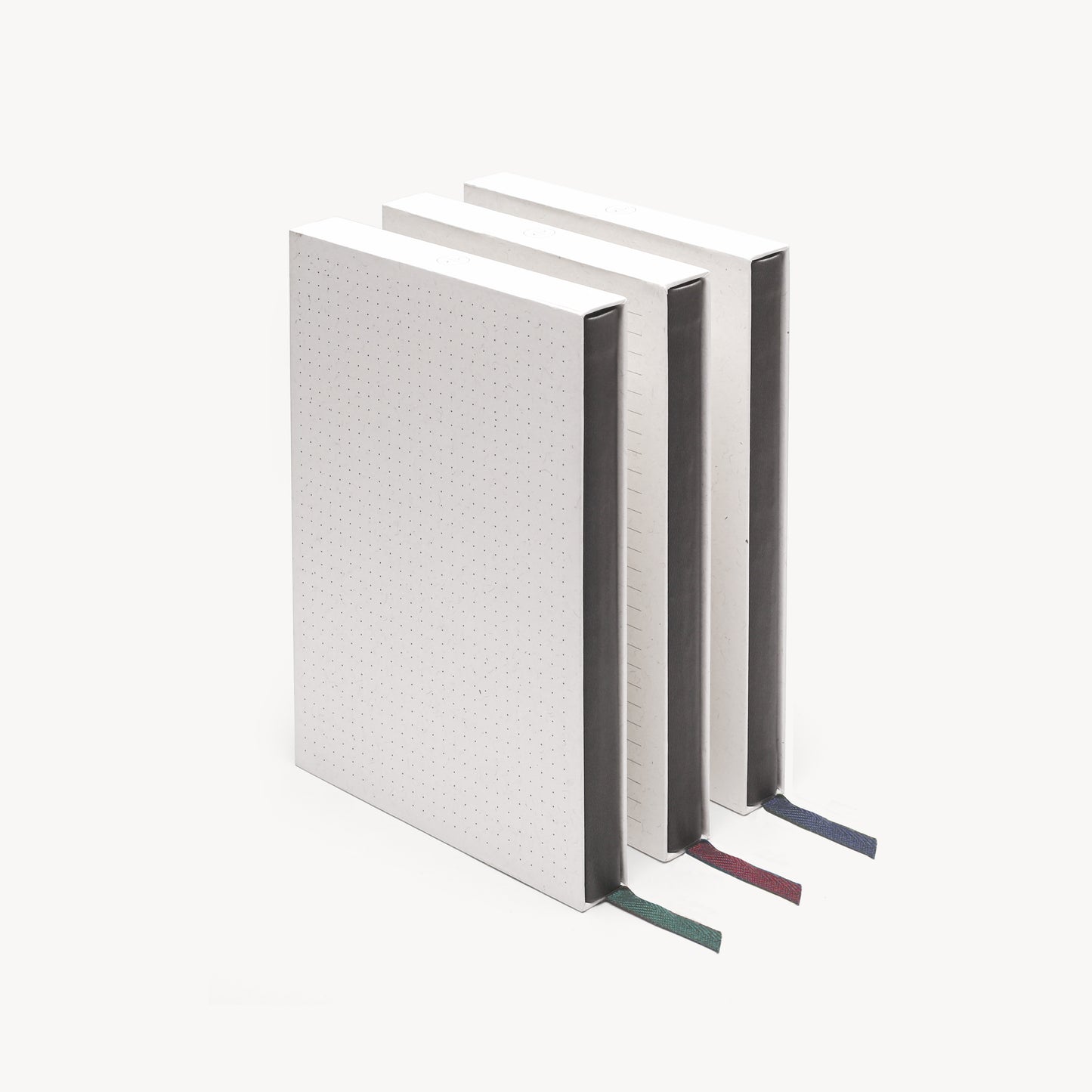

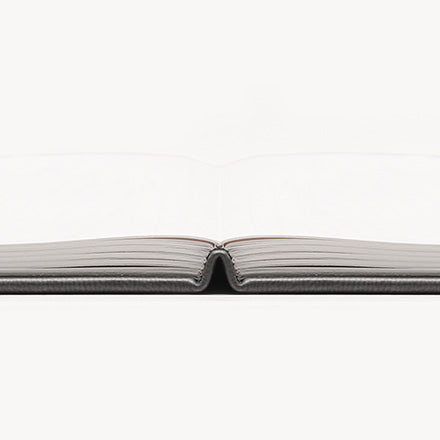

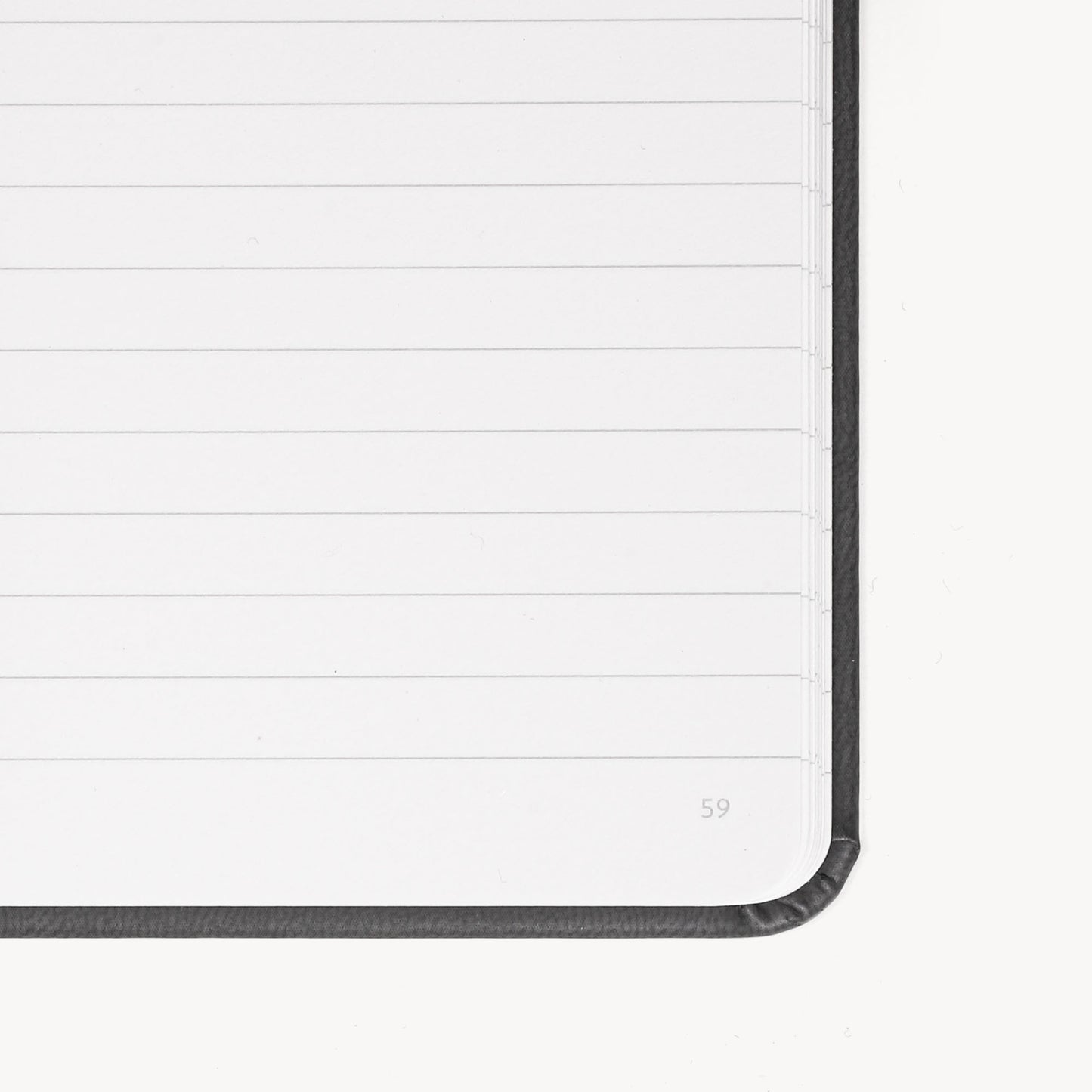
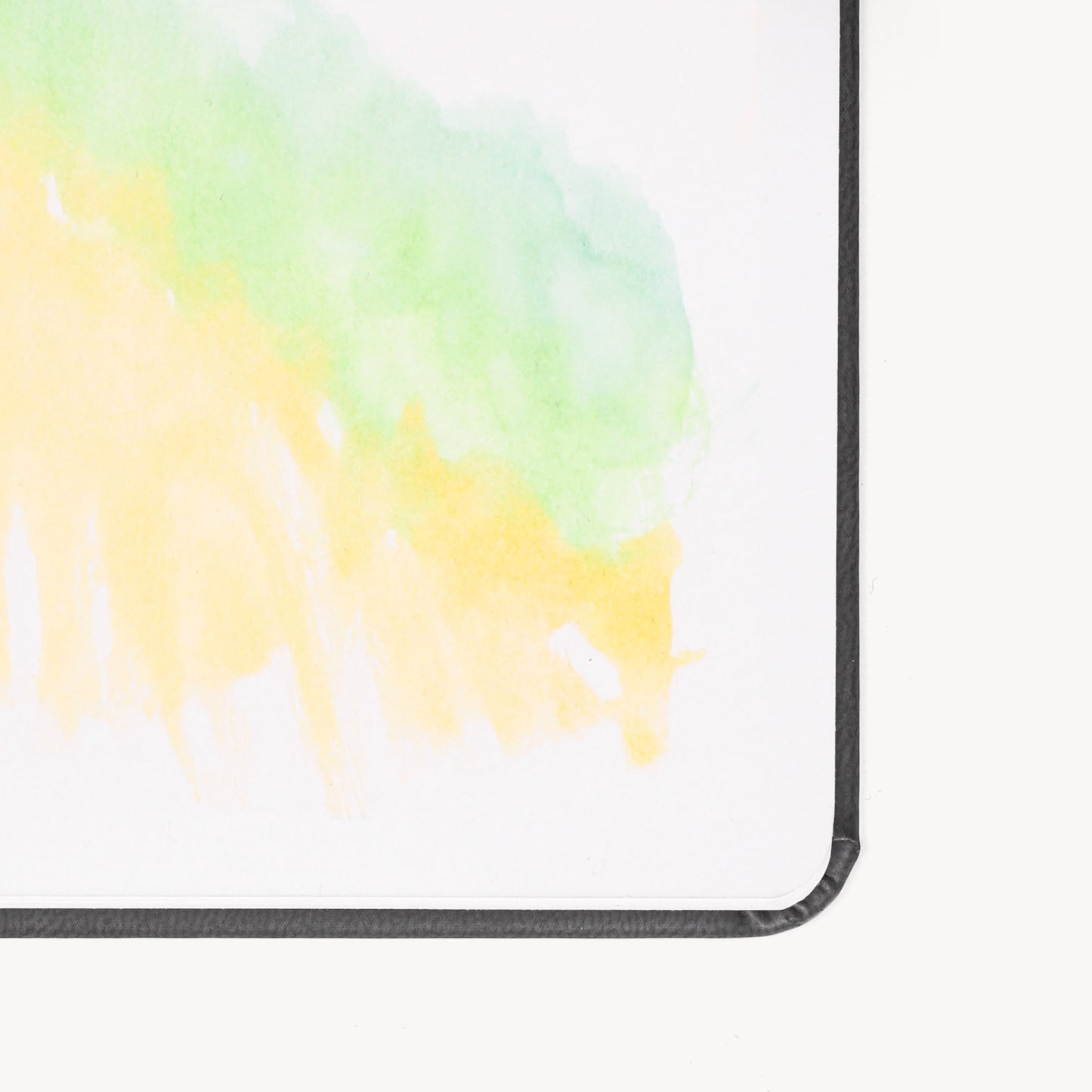
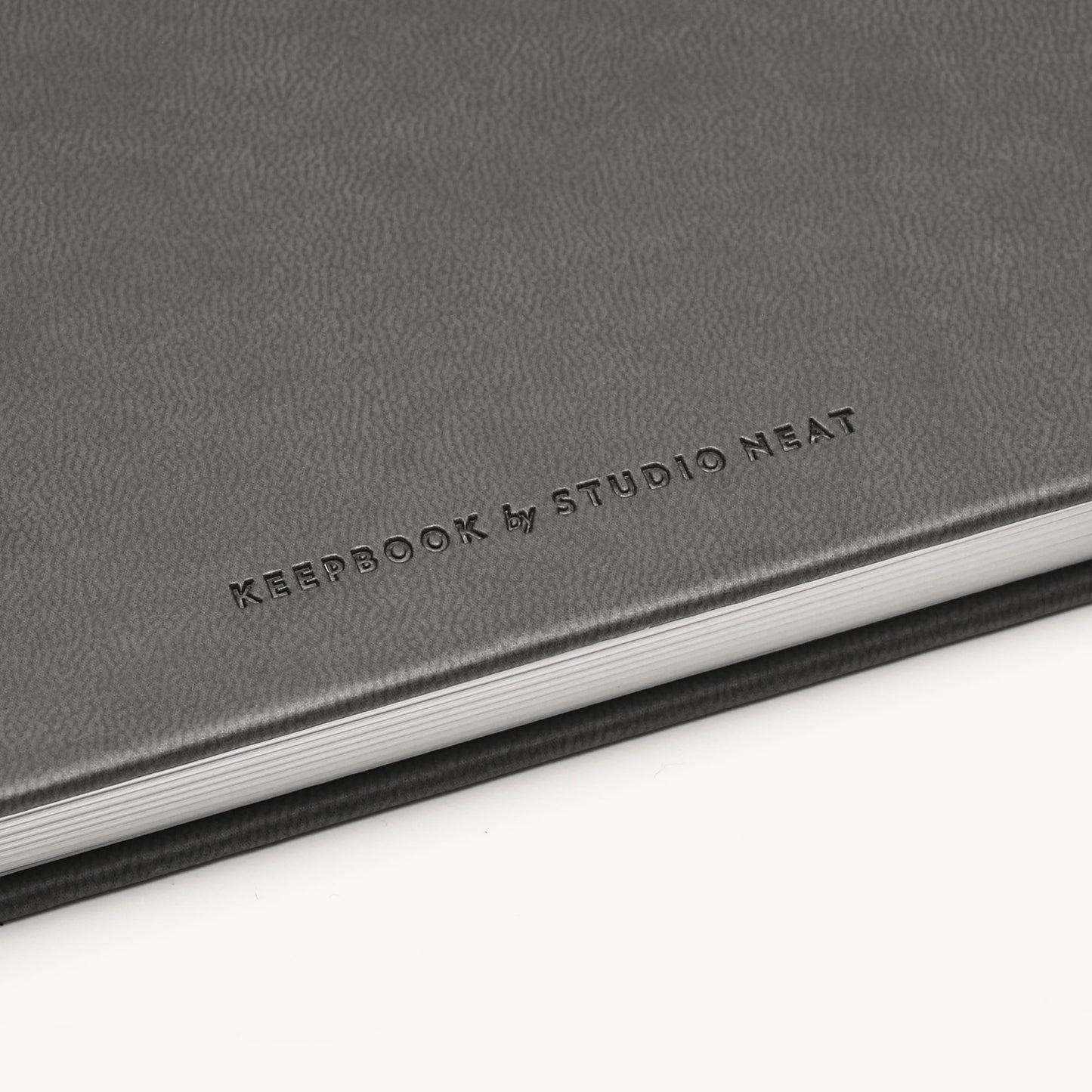
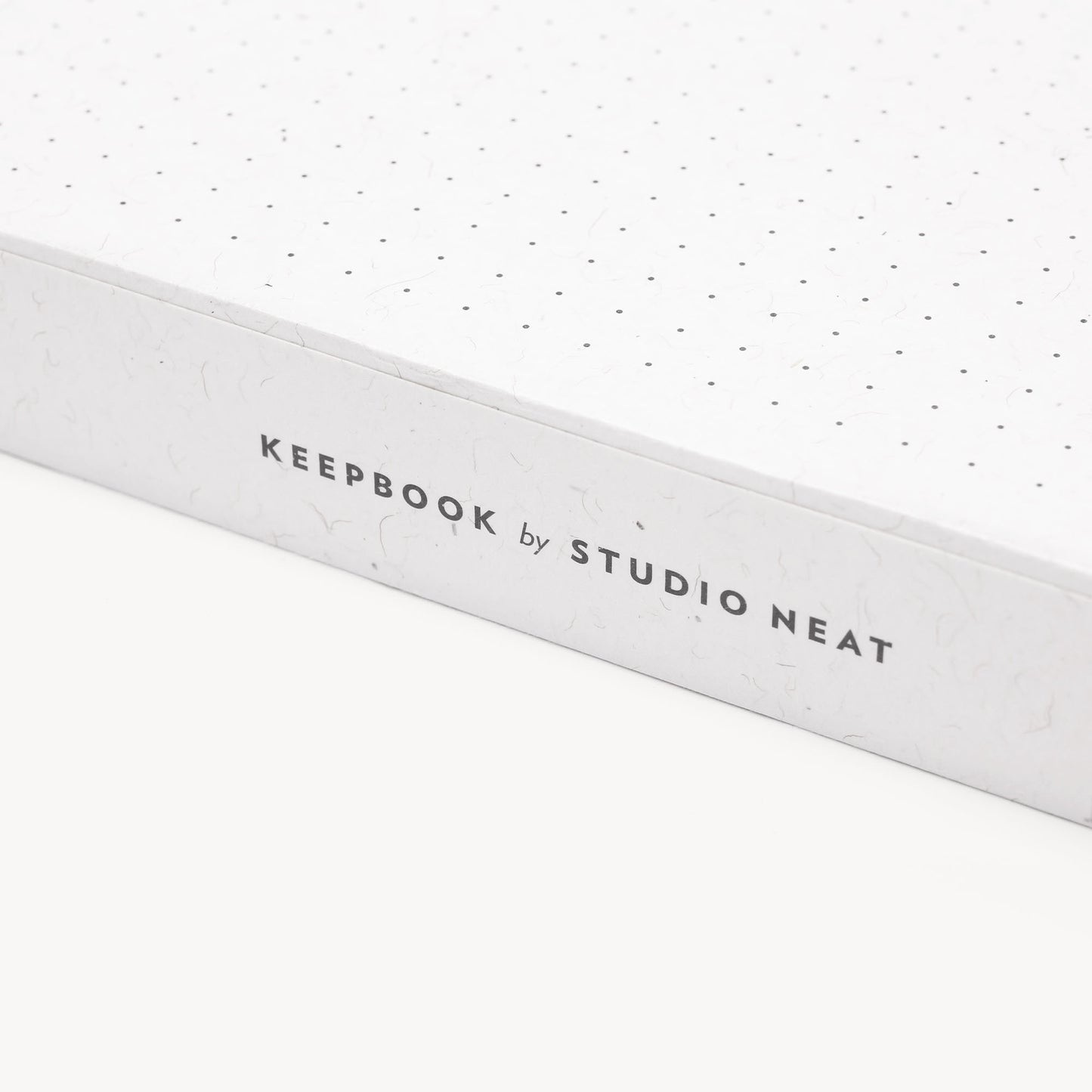
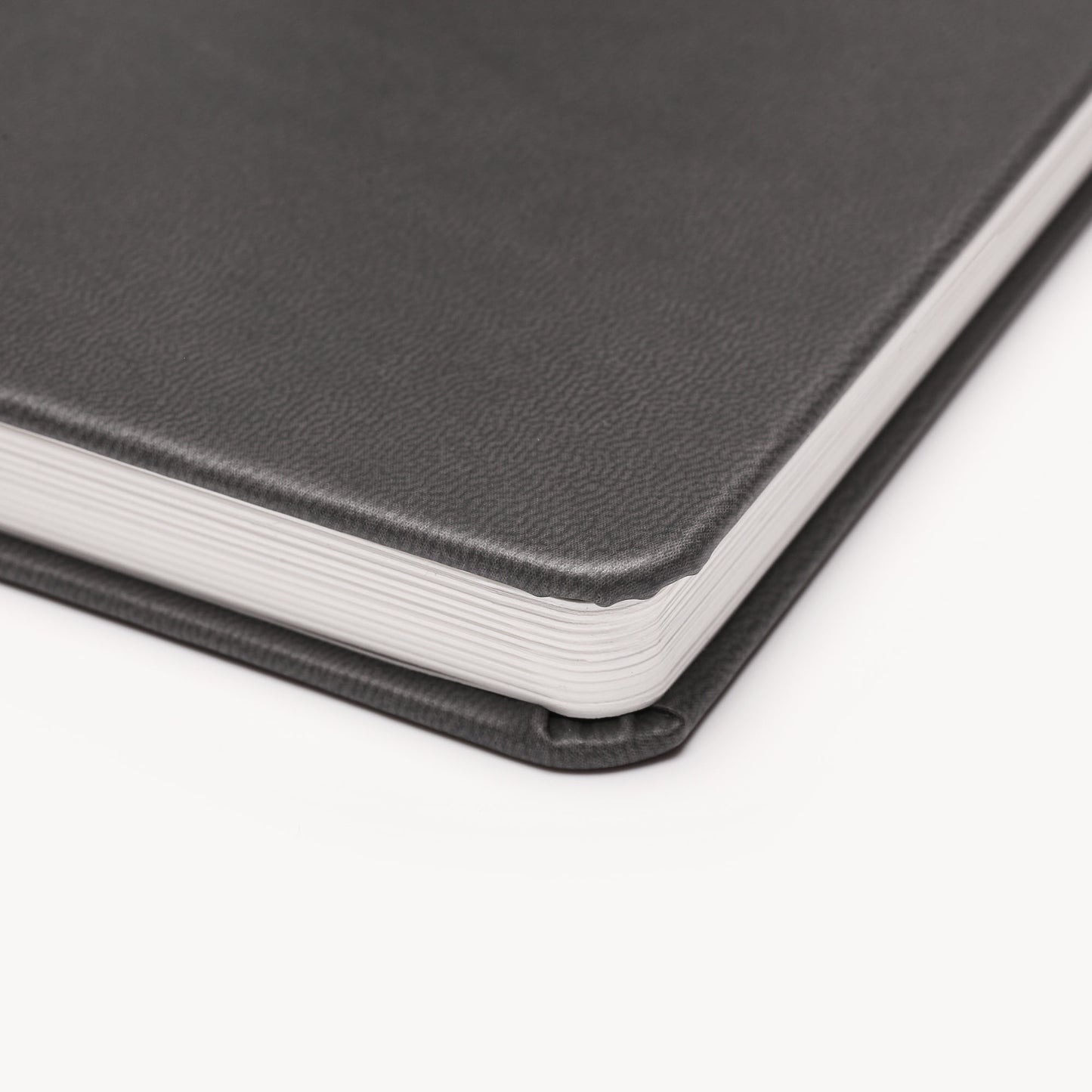
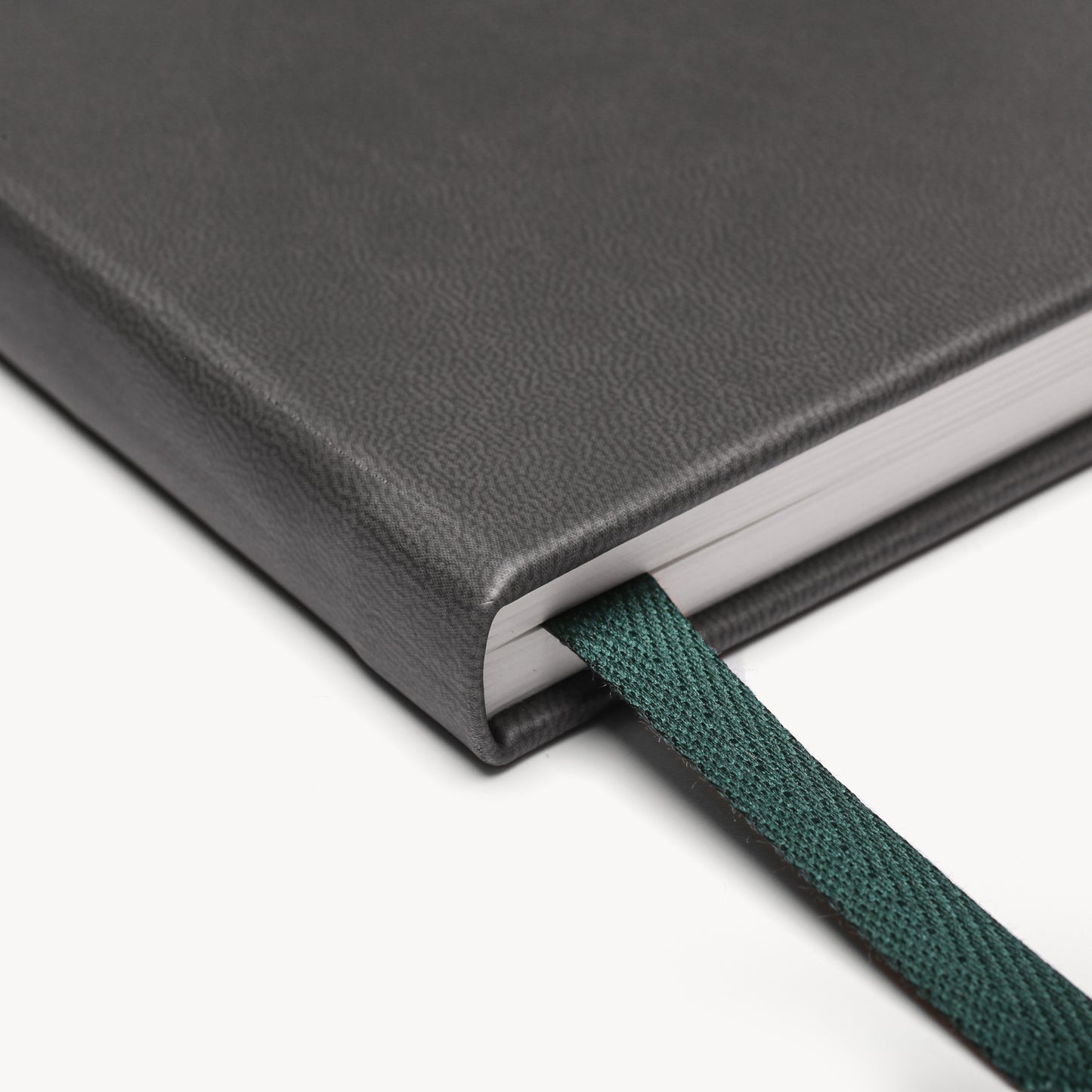
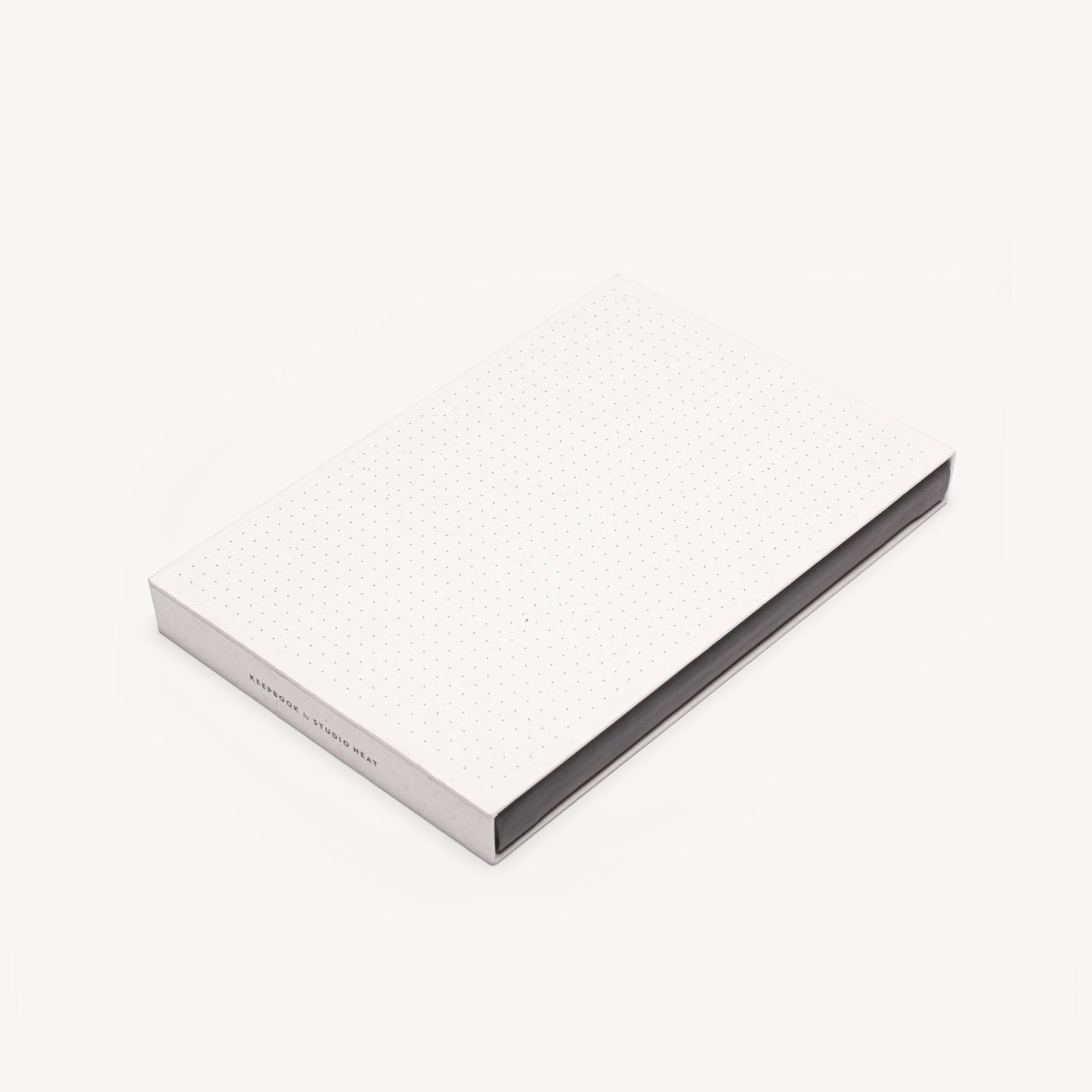
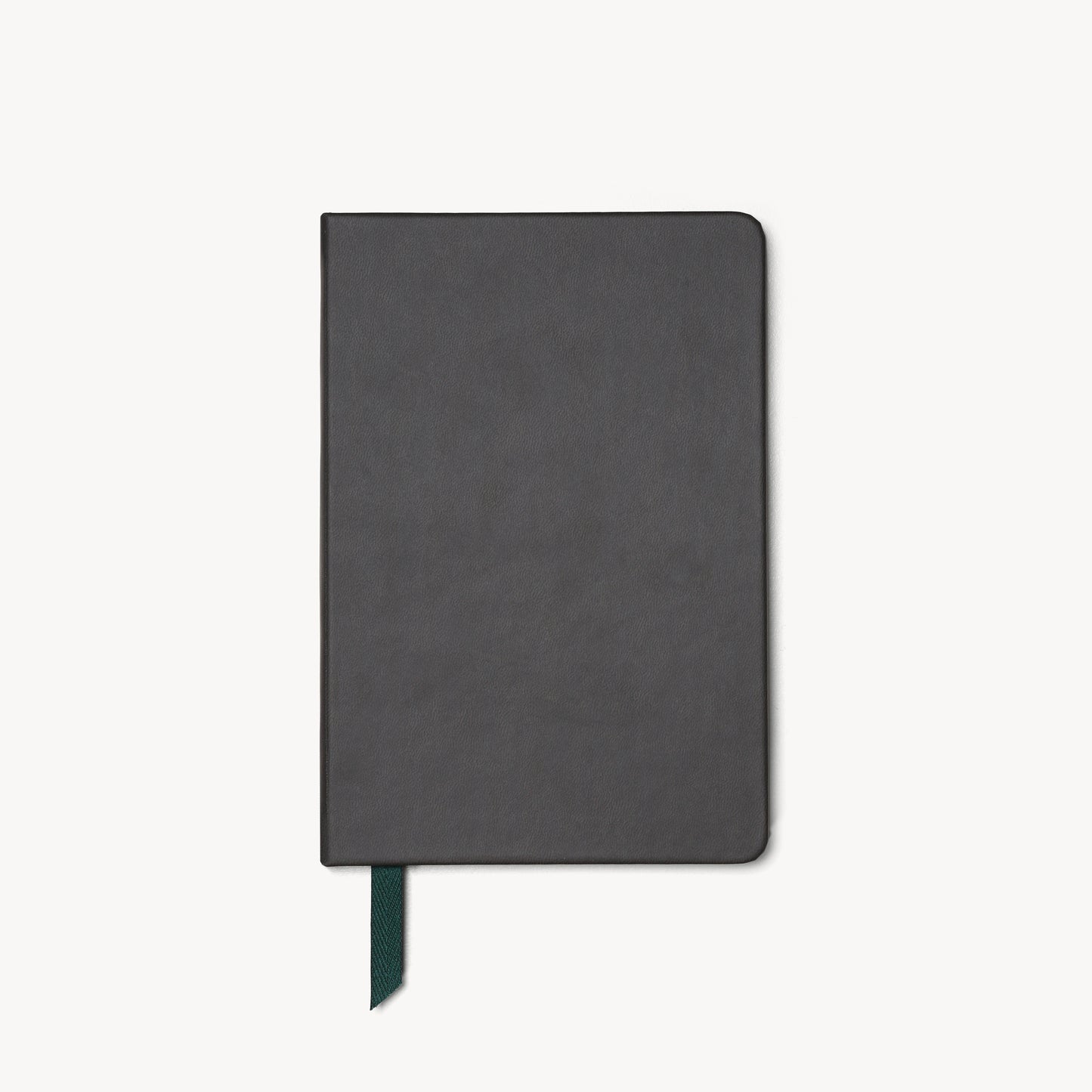
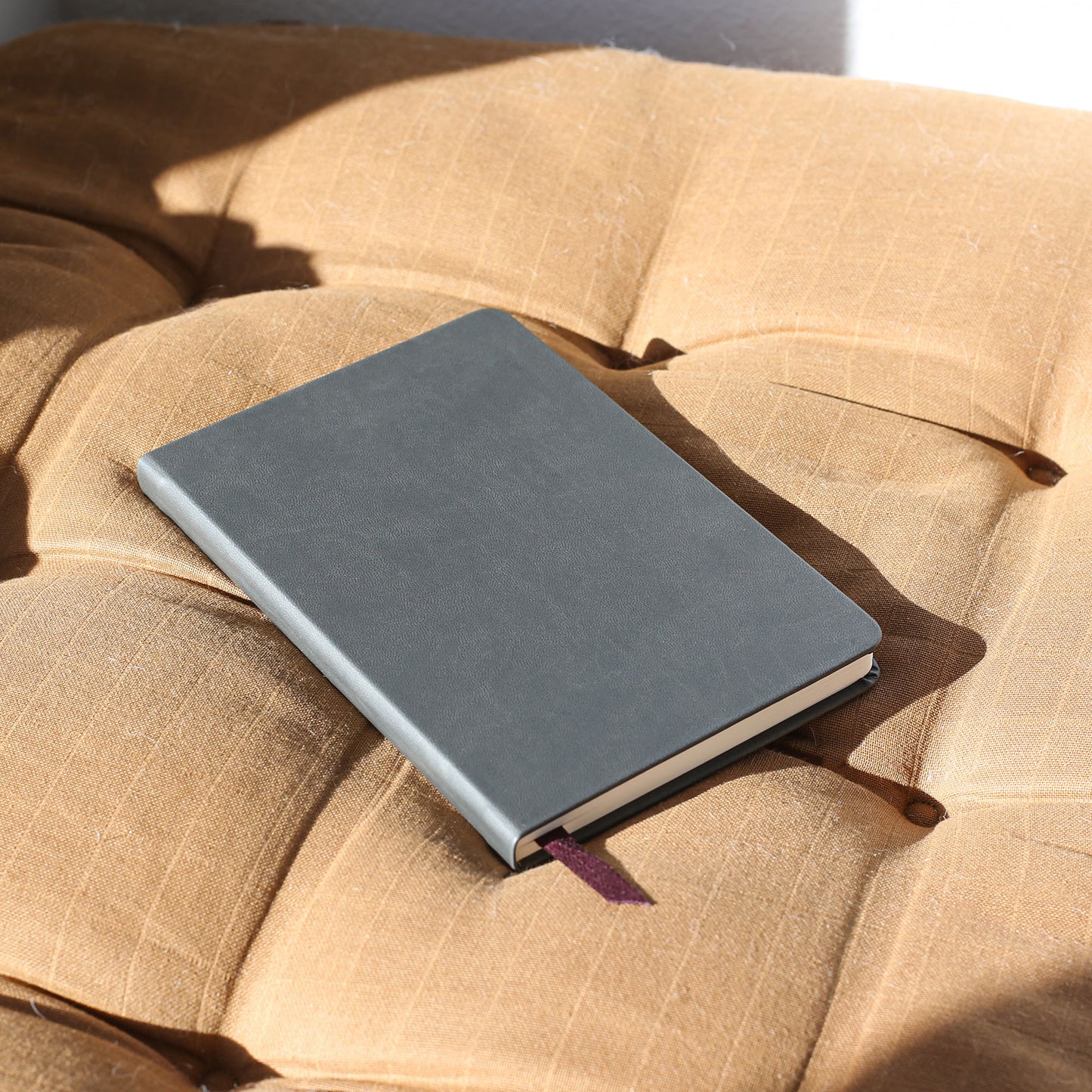
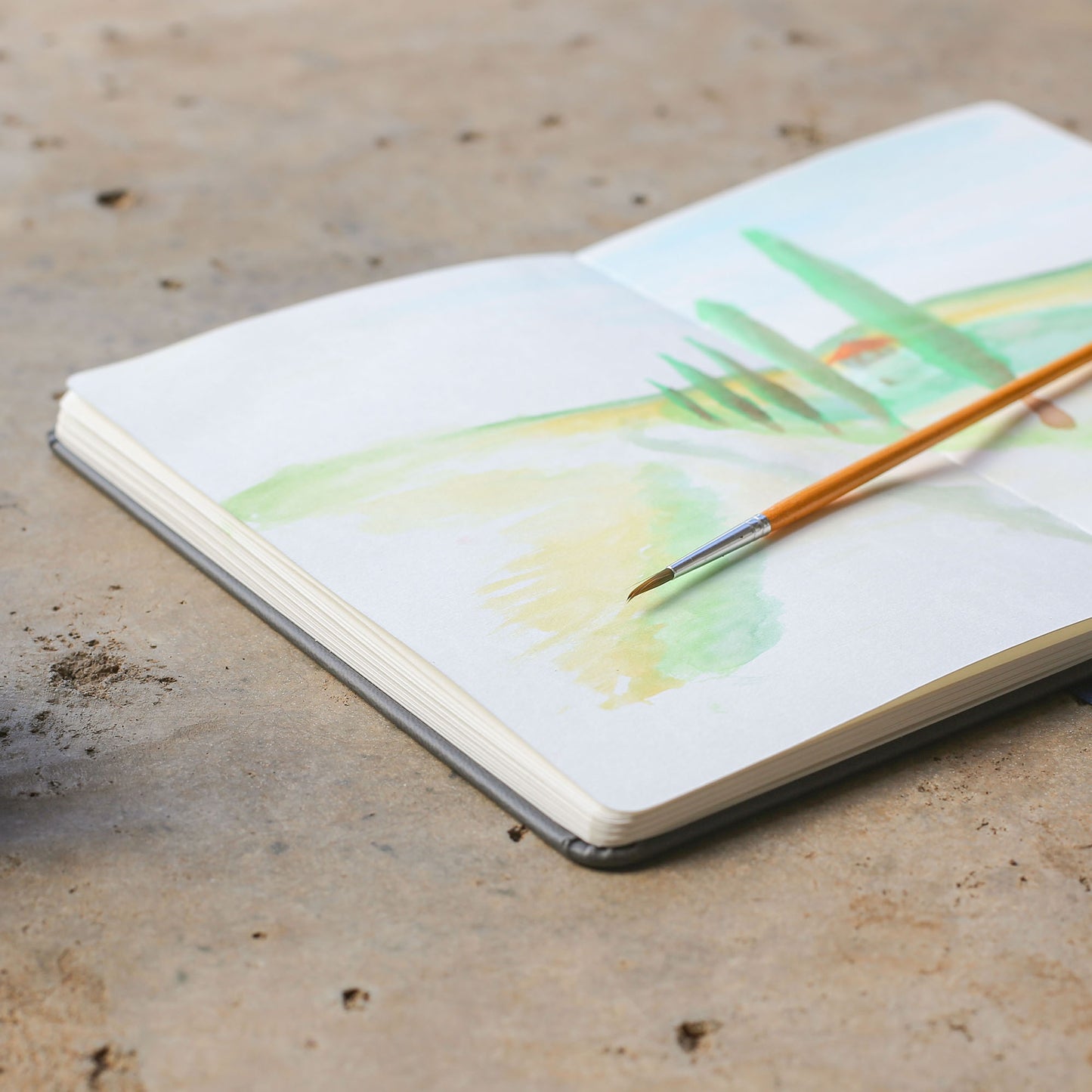
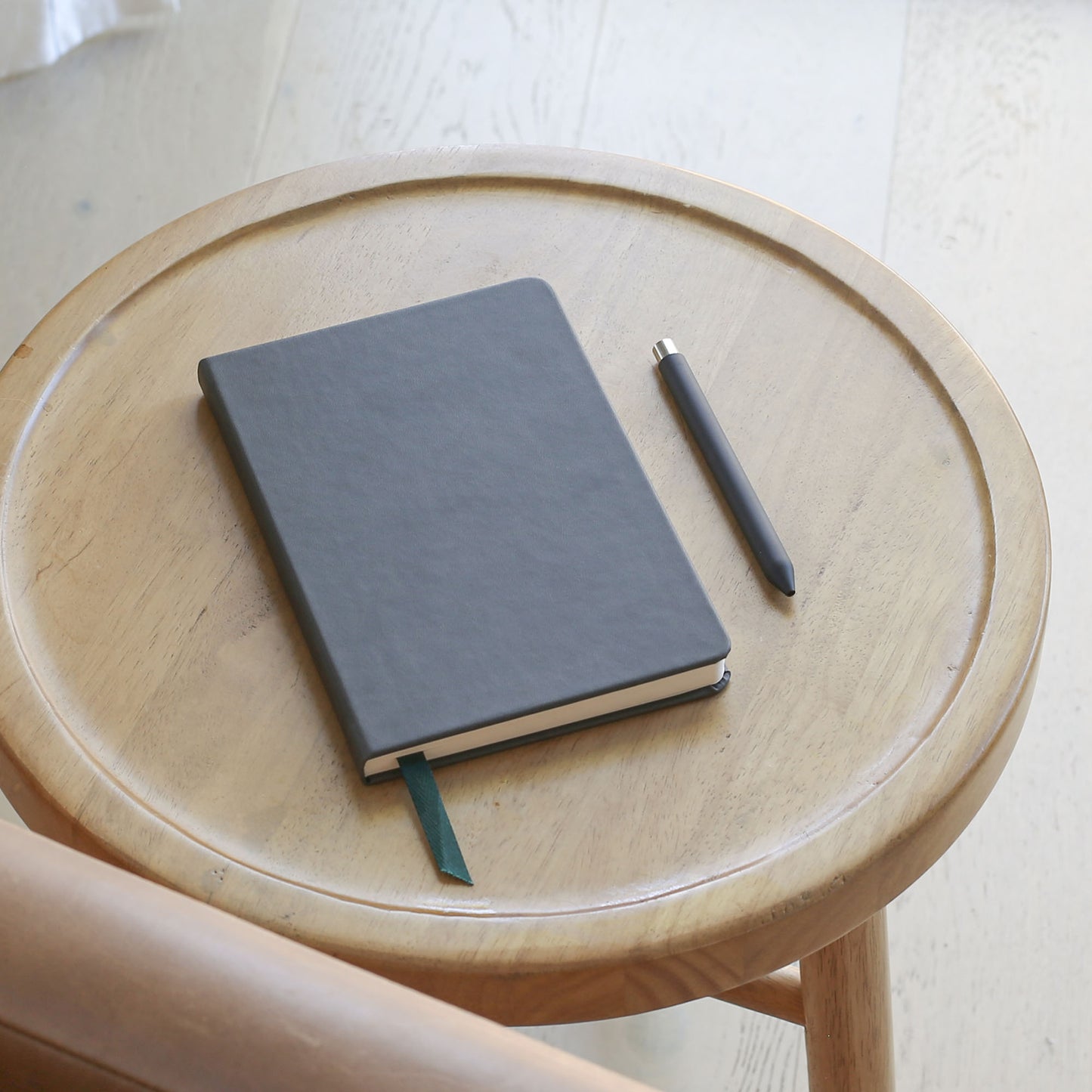
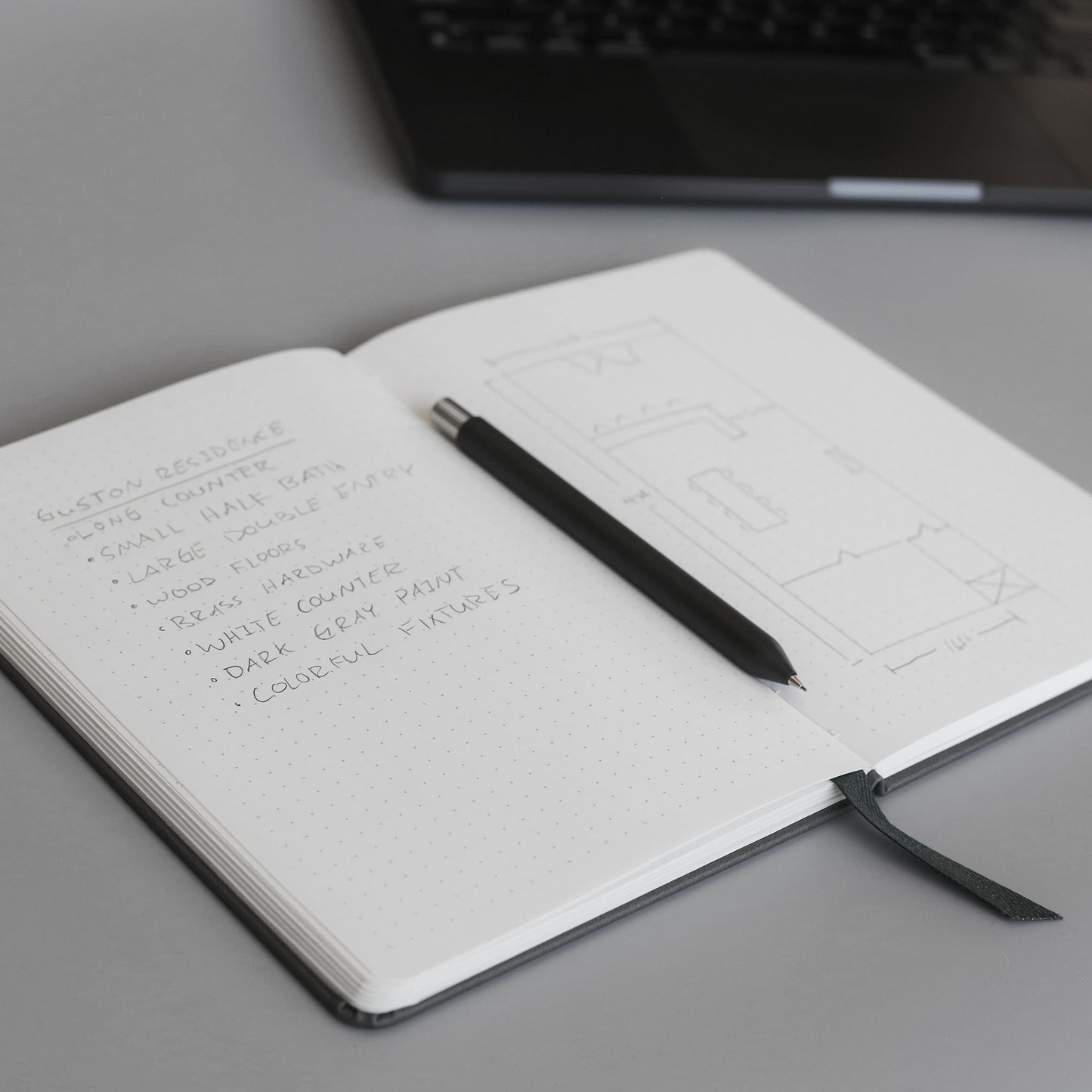
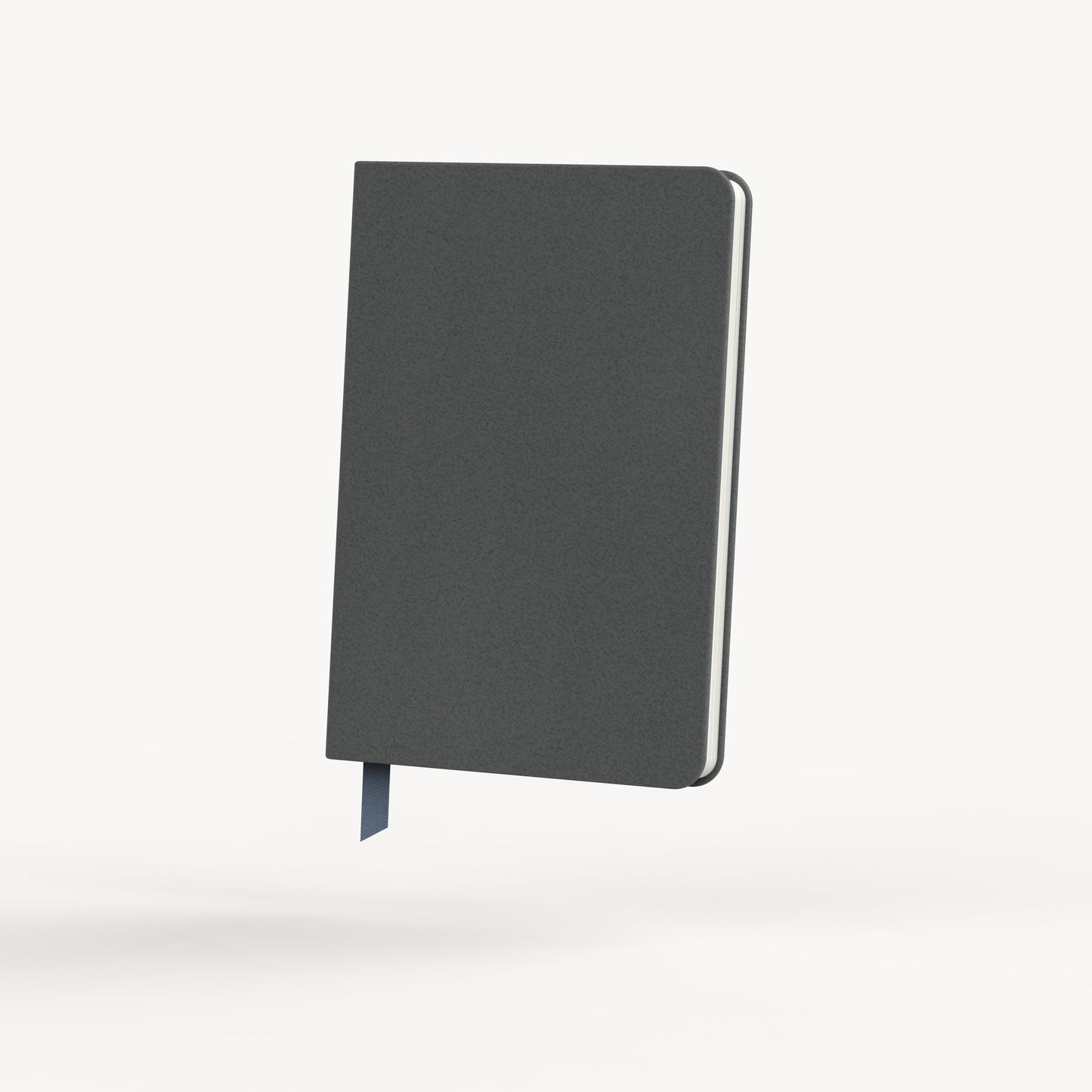
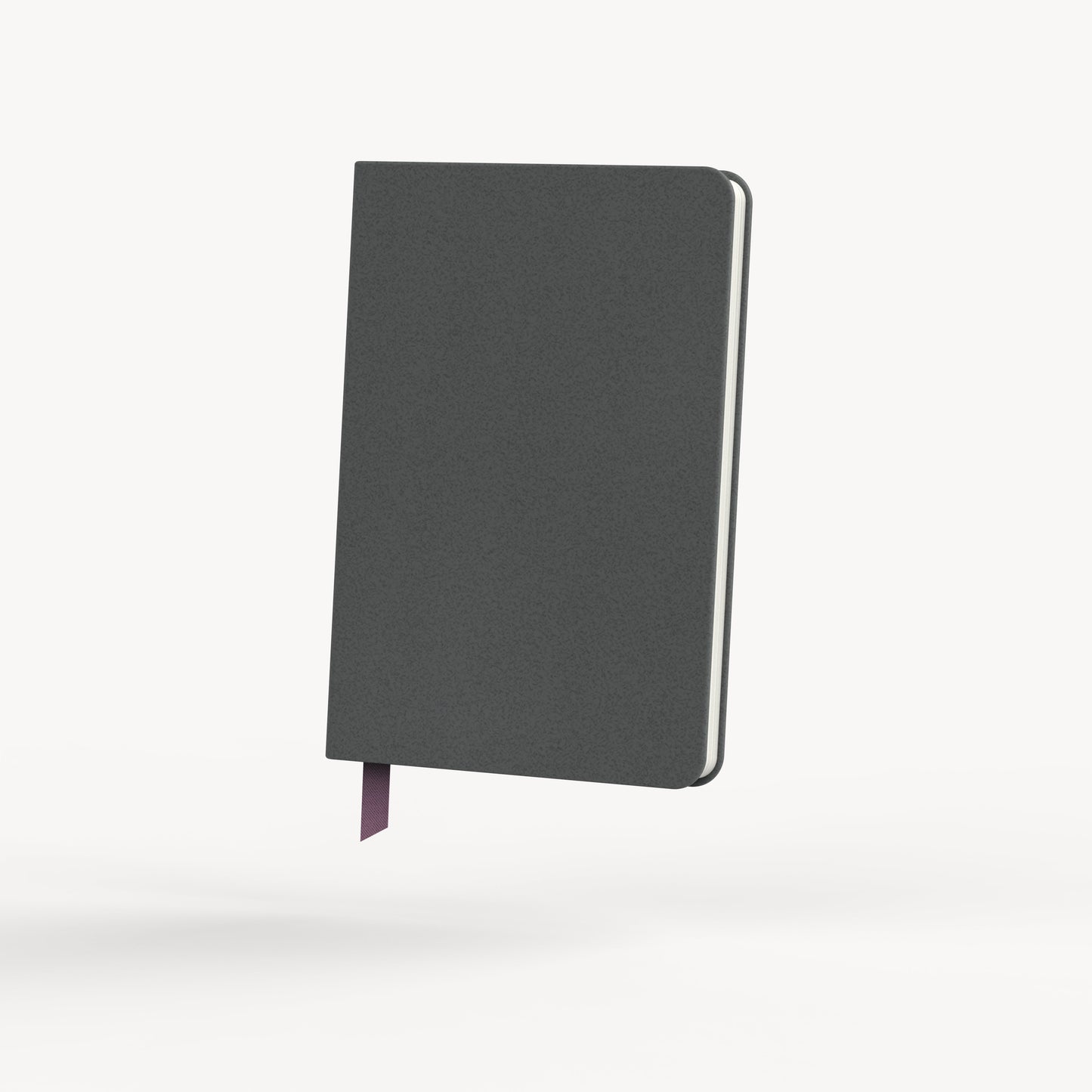
Opens Flat
Thanks to the sewn signature binding.
No one wants to be fighting against their notebook when they are trying to use it, so a layflat design is essential. The binding style differs from traditional “case-bound” hardcover books in that it can opened fully, 180 degrees, and it stays open. Now all that’s left to do is let your creative energy flow.

Quality Materials
Sweating the details.
We paid attention to every last detail in this notebook. The paper is super high quality, and performs well with a variety of writing instruments without smudging or bleeding. The covers are wrapped with a dark gray “leatherette” material that has an amazing soft touch feel. Even the woven bookmarker ribbon feels high quality. We think you will appreciate all the care and attention to detail we put into this thing.
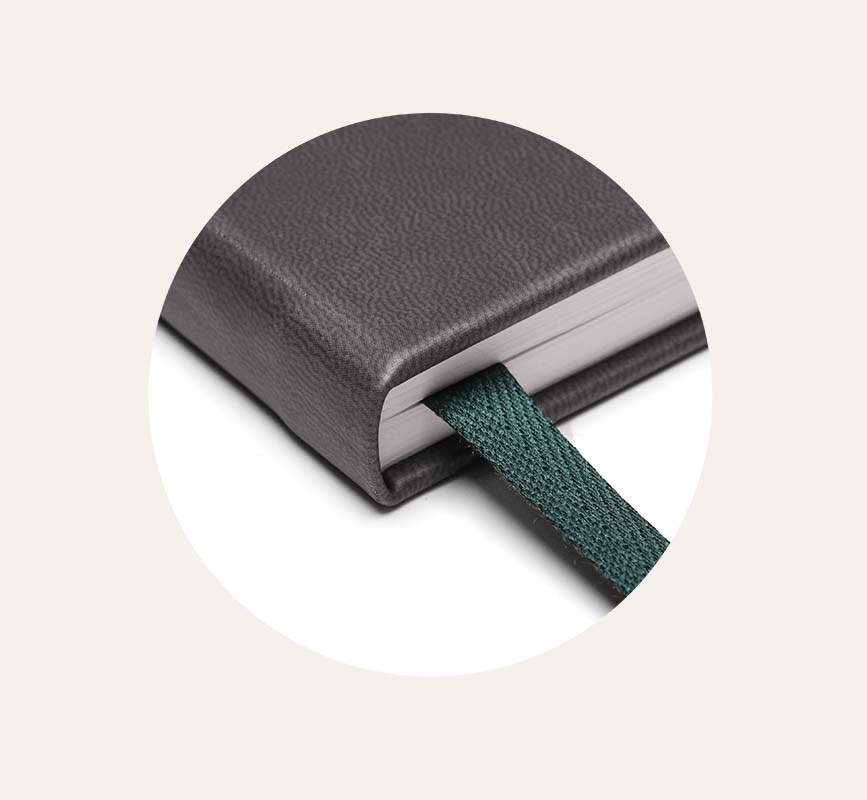
The Keepsake
A notebook meant to be kept.
Keepbook comes with a slip case, which is meant to be the final resting place for your notebook. You can write on the spine to catalogue the notebook, and it looks awesome when you line several up on a shelf. We think if you are pouring your heart into your creative work, you should keep your notebooks, as a marker of memory and progress.

Dot Grid
Featuring subtle guide markers.
The dots in the Dot Grid version of Keepbook are spaced 5 mm apart, and they have a twist. Some subtle guide markers are hidden within the grid. The guides divide each page into 2 columns, which can then be divided into fourths, making each page super flexible in how they are laid out. The guides virtually disappear if you are not looking for them, but are very useful when you need them.

Ruled
With numbered pages.
The Ruled version of Keepbook spaces the lines apart 7 mm, which is an ideal spacing to accommodate many handwriting styles. It is very close to “College Ruled” in the US. We also include a subtle break in the lines near the left edge of each page, for creating a margin, and all of the pages are numbered.
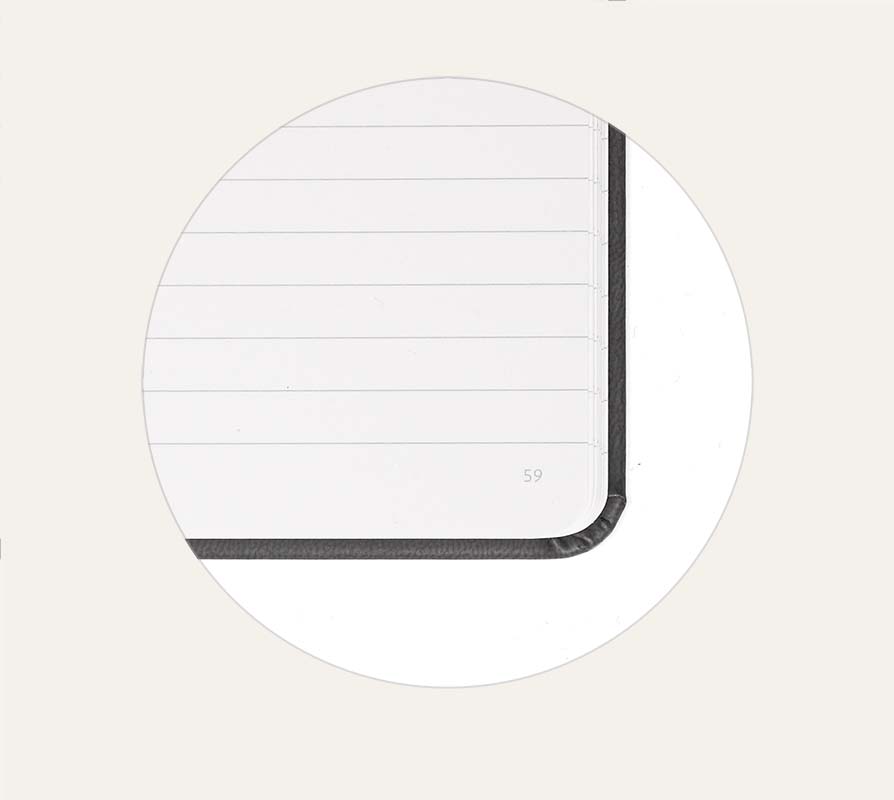
Blank
Featuring a super thick, toothy paper.
The paper in the blank version of the Keepbook is thick and heavy, 240 gsm. It has a slight texture to it, and will handle any medium you throw at it with aplomb. Pens, pencils, markers, watercolor… go wild. Due to its thickness and density, you will see very little, if any, show-through on the opposite side.
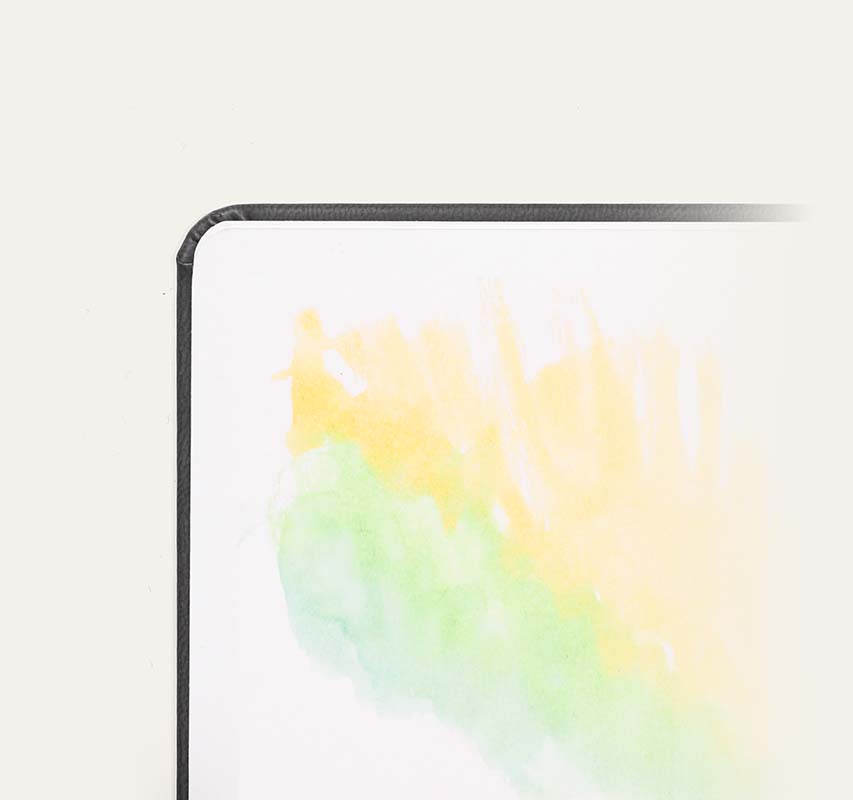
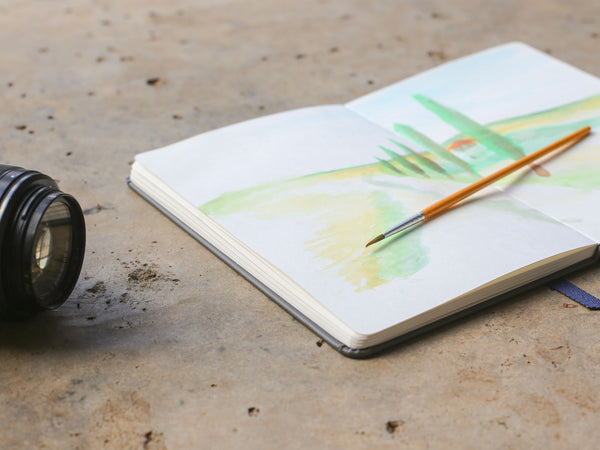
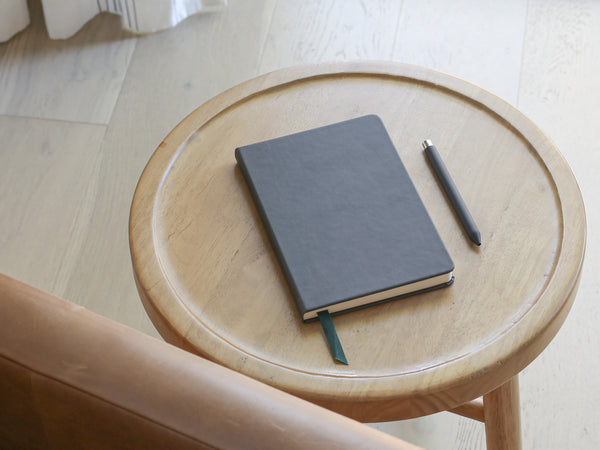
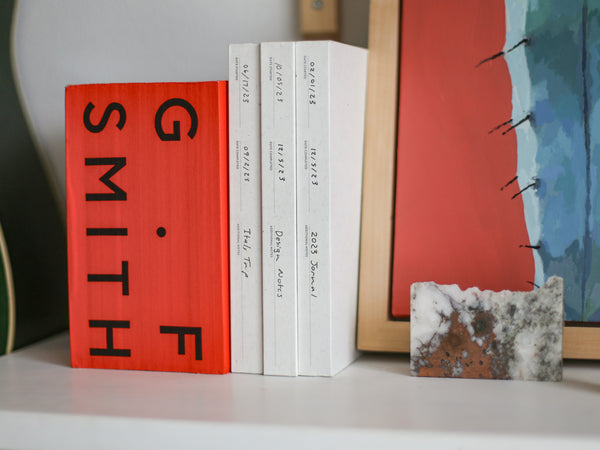
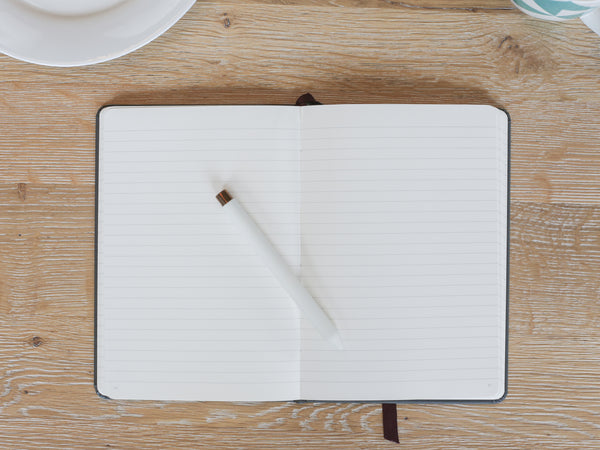
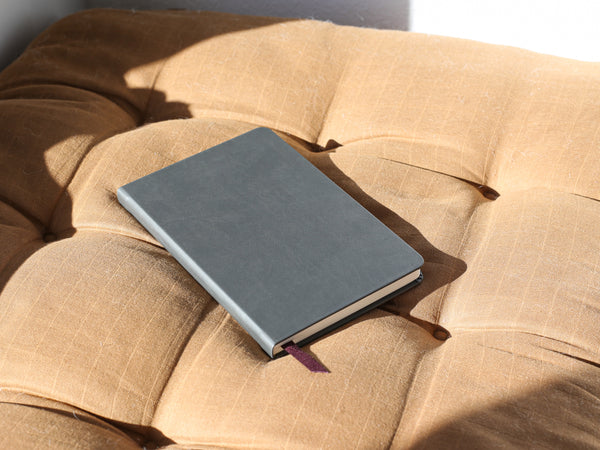
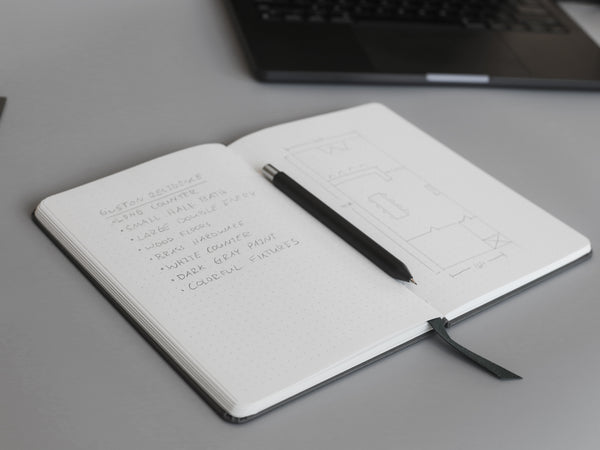
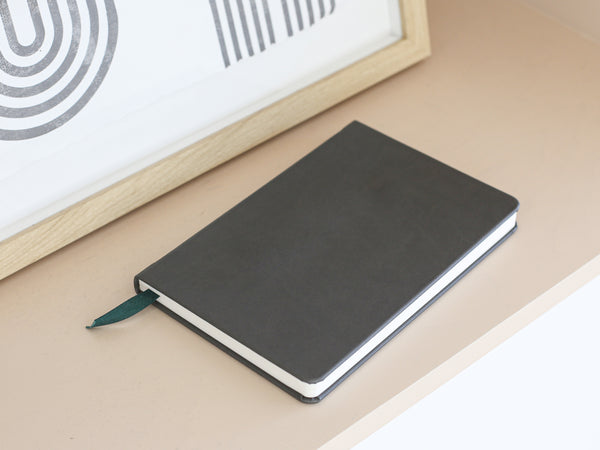
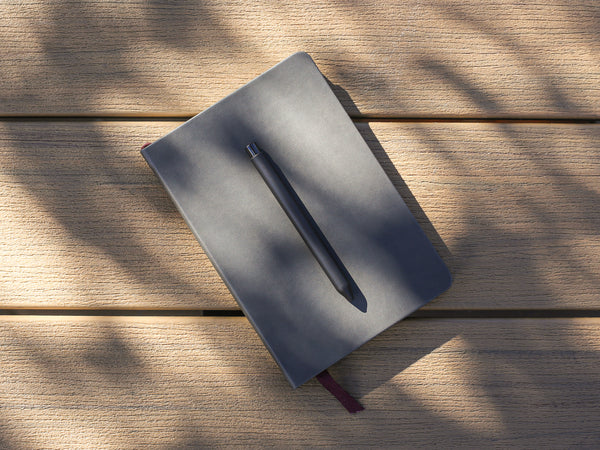
Specifications
- Page Size: 135 mm x 195 mm (5.3 in x 7.7 in)
- Dot Grid and Ruled Paper: 100 gsm. 80 sheets, 160 pages.
- Blank Paper: 240 gsm. 30 sheets, 60 pages.
- Cover: Charcoal Leatherette Polyurethane on 1.5 mm (0.06 in) rigid board.
- Rounded Corner Radius: 6 mm (0.24 in)
- Binding: Lay flat binding with sewn signatures
- Bookmaker Ribbon: 9 mm (0.35 in) twill
- Slipcase: 1.5 mm (0.06 in) rigid board wrapped in 120 gsm paper
- Typeface: Verlag, by Hoefler & Co.

No asterisks.
Frequently Asked Questions
How does the Keepbook compare to the Panobook or Totebook?
While the Panobook lives on your desk and the Totebook travels with you, the Keepbook is a hardcover option designed for long-term use and safekeeping. It's our take on the everyday notebook, perfect for journaling, sketching, or archiving big projects.
What are the main differences between the Dot Grid, Ruled, and Blank versions?
The Dot Grid is super versatile with subtle guide markers for organization, the Ruled version is great for writing with numbered pages and a margin, and the Blank version is perfect for artists with its thick, textured pages that can handle any medium.
Why are the pages in the Ruled version numbered?
Numbered pages make it easy to reference notes, track progress, or keep things organized. It’s a small detail, but it makes a big difference.
How thick is the paper in the Blank version, and what mediums does it work well with?
The Blank version’s paper is thick. At 240 gsm, it’s perfect for everything from pencil and ink to watercolor and markers. It’s got just enough texture to make every stroke satisfying.
Can the Blank version handle watercolor or heavy markers without bleeding through?
Absolutely. The super thick, toothy paper is designed to handle wet or heavy mediums with minimal (if any) show-through. Go ahead—get wild.




















